
When I started looking into homeschooling, I was introduced to a company called Alpha Omega Publications. This company has a wide selection of products for homeschooling families. One of their curriculum selections is a colorful workbook-based line called Horizons. About a year ago, we were given the privilege of reviewing the Horizons Preschool Curriculum, which I discovered had some elements of the Interlock level of their Weaver curriculum that a friend of mine had let me borrow and had used with great success herself. This summer, the Schoolhouse Review Crew was given quite a few selections to choose from. Horizons carries such subjects as math, phonics & reading, spelling & vocabulary, penmanship, health, and even physical education. Out of these, I was selected to review the Horizons 2nd Grade Spelling & Vocabulary Set.
Let me start by sharing a bit about each book in this set.
Teacher's Guide (318 pages):
The guide begins with an Introduction to help the parent understand how to use the program. We get a quick overview of the features of the program. A weekly schedule is then introduced, and we are given a look at the different kinds of exercises that will be found each week in the lessons (I will go into more detail for each activity when I discuss the student workbook). Instructions are given on how to teach the lessons. Additionally, information is given about the "Rules" that are applied, the additional reproducible masters, ways to extend practice, the spelling dictionary, word family charts, and penmanship.
Following the Introduction there are letter formation charts for both manuscript and cursive writing. The Scope and Sequence then shows the parent what each of the 32 weeks of lessons will focus on. The student will begin week 1 with a review of initial, medial, and final consonant sounds plus a review of division of words into syllables. Each of the subsequent weeks will focus on a specific spelling rule. For example, during weeks 2-7 the children will focus on spelling words with short vowels, long vowels, and compound words, each on a specific week. Every 8th week the children will review the words from the previous 7 weeks. You can find a detailed Scope and Sequence which will show you all the rules being taught, by following the link over on the 2nd Grade Spelling & Vocabulary Set page.
The majority of the book is dedicated to the Teacher Lessons section. Each page is divided into 2 columns. On each page there is a small version of the student page, with the answers filled in. You will also find the instructions for the activities, teaching tips, and extended activities. The first lesson of each week also includes the goal for the week, and the miniature version of the rule card.
After the 160 lessons, there is a section of Reproducible Worksheets, one extra worksheet per week. The exercises are varied, giving the child extra practice with their words. There are cut & glue activities, writing activities, crossword puzzles, word finds, alphabetical order cards, and dictionary skills pages. Following the reproducible pages you will find the answer key for said pages.
The next section is the Reproducible Phonics Rules Flashcards. These are full-sized versions of the rule cards shown in the Teacher Lessons section on day 1 of each week. They can be displayed so the child can be reminded of the rule that is being focused on each week.
The Teacher Guide concludes with a Cumulative Word List for Spelling 1 and Spelling 2. These words are listed alphabetically on the final pages of the Teacher Guide.
Student Workbook (262 pages):
The Student Workbook also begins with an introduction. This is a 1 page letter directed to the student explaining what to expect in the program. Before the lessons begin, the child is given information on correct paper placement for both right-handed and left-handed writing, correct hand and pencil position while writing, and correct posture. The same letter formation charts that are in the Teacher Guide are also found in the Student Workbook. A 4 step process for memorizing spelling words is also given.
The remainder of the book is devoted to the lesson pages. It is important to note that the pages are perforated and are meant to be removed for use. The reason for this is to allow for proper penmanship. It would be too difficult to write properly if the pages were left in the book, as the book is quite thick and won't lie flat. I have been removing one page at a time. After each lesson is completed, we store the pages in a file folder.
Each week's lesson begins with an assessment called "What Do You Know?." These assessments are not meant to be graded, but to help you identify what words your child already knows. As the parent reads the words and uses them in a sentence, the child is to write each word in the first column. The second column is meant for the teacher to put the correct spelling in, if needed. And the third column is for the child to practice the words they got incorrect. On the back of the assessment page, you will find the words for the week, listed at the top in a colored box. The child is to write 2 sentences using the spelling words, and then write the words down again to practice them.
The first lesson of each week requires the child to use the word bank on the right side of the paper to complete the exercises. These exercises help introduce the child to the words. There are also "Working Words" added to the spelling list. There are always 2 words already listed, plus the parent is to add 3 more words.These words can be words the child is struggling with or words related to a subject they are studying.
On the second day of each week, the child is examining and exploring the words. They are making sure they know what the word means, what it looks like, and looking at such things as how many syllables are in the word. Each week is slightly different, which keeps the lessons from getting repetitive.
On the third day of each week, the child looks at the words in context. They may read a passage and identify their spelling words, or they may have to fix a sentence that is using the wrong word, placing the correct spelling word in its place. There are many, varied ways the children will practice with words in context. Each week, they also have a Bible Story and exercise that connects the story to at least one of the spelling words.
On the fourth day of each week, the child is to use the words in writing, applying understanding of the words.
In addition to the workbook pages, the child is also to be given the extra reproducible worksheet found in the back of the teacher guide, plus each day the child is to work on several sentences using their spelling words.
Finally, on the fifth day of the week, the parent gives the child the spelling test. The words are presented the same way as the initial assessment at the beginning of the week. The parent reads the word, uses it in a sentence, and repeats the word. Once all the words have been tested, they are checked and the parent (or child) writes down the correct spelling of the misspelled words at the bottom of the page. On the reverse side of the spelling test page, there is room for practice and retesting if needed.
Student Dictionary (106 pages):
The student dictionary helps a child learn how to use a dictionary. Their spelling words can be found in the first half of this book, plus choice Working Words are to be added in the back of the book. This is a nice gentle introduction to a dictionary as the words are separated from the definitions, allowing the child to find the words easily. There are guide words, definitions, part of speech, plus sample sentences, just like a big dictionary. The children can use the dictionary to find the definition of their spelling words to help them in forming sentences and to make sure they know what the words mean.
How we used Horizons 2nd Grade Spelling & Vocabulary:
As we are more relaxed during the summer months, I had already planned on taking two weeks to complete a week's worth of lessons. This actually worked out quite well. I was able to spread the lessons out so Amelia didn't have too much to do each day. Though the initial assessment and the first lesson of the week are supposed to be completed the same day, we have been doing them on separate days, otherwise the first day of the week would have 3 pages of work, in addition to that days sentences. This of course, has changed the schedule up a bit.
I think I have found a workable schedule, which does differ from the recommended schedule. We will continue this schedule through the school year.
Week 1:
Day 1: Amelia takes the assessment and rewrites any incorrect words after I show her the correct spelling.
Day 2: The spelling words are alphabetized on the reverse side of the assessment page, in the spot meant for practice. I do not have her write the sentences on the worksheet, as she is already going to be writing sentences. She writes 3 sentences in her notebook, one sentence per spelling word. I have her start at the top of the list and work her way down throughout the two weeks.
Day 3: No spelling (it will end up being our co-op day here in a month or so anyway)
Day 4: Complete the Day 1: Introduce the words page, plus write 3 more sentences.
Day 5: Complete the Day 2: Examine and Explore page, the extra reproducible page, plus write 3 more sentences.
Week 2:
Day 6: Complete the Day 3: Look at Context and Meaning page. No sentences, as there is usually some additional writing in the lesson.
Day 7: Write 5 sentences
Day 8: No spelling
Day 9: Complete the Day 4: Apply Understanding page. No sentences.
Day 10: Use remaining words in sentences. Then I give the final spelling test. So far she has only gotten one word wrong on a spelling test, so I haven't re-given the test, I just included the misspelled word in her Working Words list.
What did I think of Horizons 2nd Grade Spelling & Vocabulary?
This program is an easy to follow spelling curriculum. Instructions are clearly stated for the parent in the teacher manual. The student pages are pleasing to the sight, colorful, but not too flashy. The child can see clearly what they are supposed to do for each lesson. So far, the pictures that have been included have been easily identifiable. I know it drives me crazy when I can't tell what a picture is supposed to represent, and I haven't had that problem with this curriculum. The lines where the child is to write are just right for this age. There are blue top and bottom lines, with a red dashed line for the mid-line. The space seems to be just the right height for Amelia to write on, which helps her to form her letters correctly.
The varied lessons really help the child to internalize the words in fun ways. I love that a dictionary is included so children can gain dictionary skills and explore the meanings of the words. It is so important that a child understands the word, and isn't just learning the words by rote.
As you can tell, for our family, there was a bit too much work for each day. As Amelia has writing in other subjects as well, I don't want to overwhelm her with so much writing in spelling each day. I think spreading the lessons out is also beneficial because we have a longer time to focus on the words before moving on to a new set of words. Obviously each child is different, and other children may be fine with the amount of work required daily. In fact, there may come a day when I speed back up to the recommended pace, but for now, I don't want to frustrate Amelia.
Do I recommend the program? Most definitely. It is well designed and a great program. Your child will learn how to spell the words and learn how to apply them. As a bonus, your child will learn how to use a dictionary.
You can check out Alpha Omega Publications at their website, and the following social media sites: Facebook, Twitter, Google+, Pinterest, and Instagram.
Don't forget to take a look at what my fellow Crew Mates had to say about the varied Horizons programs that were able to review. Just click on the banner below:
The varied lessons really help the child to internalize the words in fun ways. I love that a dictionary is included so children can gain dictionary skills and explore the meanings of the words. It is so important that a child understands the word, and isn't just learning the words by rote.
As you can tell, for our family, there was a bit too much work for each day. As Amelia has writing in other subjects as well, I don't want to overwhelm her with so much writing in spelling each day. I think spreading the lessons out is also beneficial because we have a longer time to focus on the words before moving on to a new set of words. Obviously each child is different, and other children may be fine with the amount of work required daily. In fact, there may come a day when I speed back up to the recommended pace, but for now, I don't want to frustrate Amelia.
Do I recommend the program? Most definitely. It is well designed and a great program. Your child will learn how to spell the words and learn how to apply them. As a bonus, your child will learn how to use a dictionary.
You can check out Alpha Omega Publications at their website, and the following social media sites: Facebook, Twitter, Google+, Pinterest, and Instagram.
Don't forget to take a look at what my fellow Crew Mates had to say about the varied Horizons programs that were able to review. Just click on the banner below:














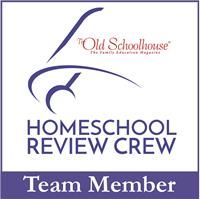
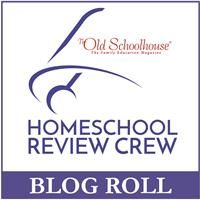













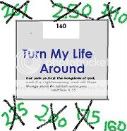
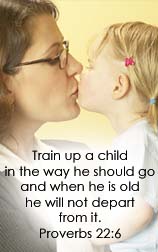



![[PREMIO2009.png]](https://blogger.googleusercontent.com/img/b/R29vZ2xl/AVvXsEjXD_Gx-wZ9EM5hXKrEYLksEBkYfRQtmb8VDVTDG_yyLggQoFIstZsh4zszdG20KqErZicRzEhiNYLty7j3IMXJYsABqkXjr8pp-ncj71xCbpxlXGbGpZq2fTuDQqq1RMKV4DPcDBnBViA/s1600/PREMIO2009.png)
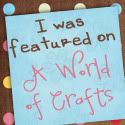
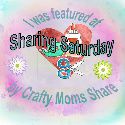


I've used Alpha Omega before. I love their workbook formats, and I also like how non-denominational they are.
ReplyDelete